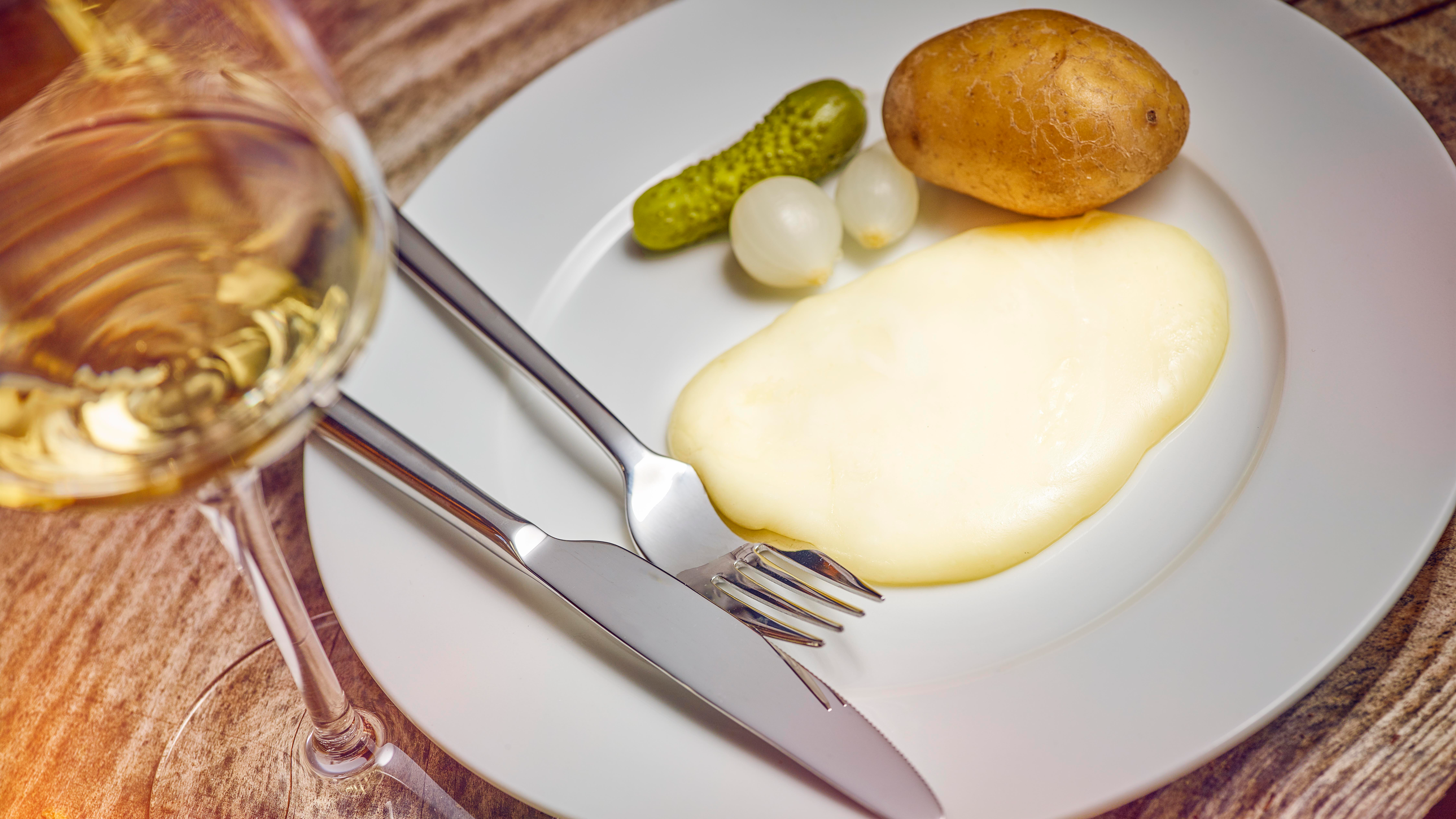Switzerland Leads The World In Genius Uses For Cheese
Swiss cheese might be a beloved product around the world, but there's one tradition Switzerland keeps for itself.
Wooden buildings with carved facades splashed with bold colors and frescoes line the narrow lanes of the village of Appenzell, Switzerland. Located at the foot of the Alpstein mountains, with a landscape of grassy hills and dewy-eyed cows, this Northeastern Swiss town is steeped in tradition. And one of the most prominent of these traditions is cheese production.
The first restaurant I visited in Appenzell was tucked into an 18th-century cottage, covered with striped shutters and colorful designs that made it look like it was straight out of the Hansel & Gretel forest. It was a rustic spot with long tables and deep pots of bubbling fondue. It was the middle of July, but the cool mountain air made the molten Gruyere cheese spiked with white wine feel perfectly at home on the table.
Fondue arose in Switzerland in the 1700s as a means for farm families to stretch their produce through the winter months. Leftover cheese was warmed on the hearth and pieces of stale bread were softened in the melted cheese. Of course, now you can eat fondue all over the world, but I found the Swiss version a little richer and creamier than what I had tasted elsewhere. It must be all those happy cows.
After exploring the folkloric traditions of the Appenzell heritage museum and strolling by the gurgling Sitter River that cuts through town, I stopped at an elegant eatery with linen tablecloths and polished maple paneling. After checking out what the other diners were eating, I spotted a dish that looked like macaroni and cheese covered with crispy onions. I learned that it's called alplermagronen, or herdsman's macaroni, and I ordered some immediately.
Upon first bite, I was surprised to taste potatoes and bits of bacon among the noodles, too. The whole thing was dense and layered with cream as well as cheese, and its surprises didn't stop there. The real shock came when I watched locals mix the pasta dish with applesauce. There was a bit too much going on for me in every bite, but I was fascinated by a collection of ingredients and textures I hadn't seen paired together before.
A few days later, on a rainy evening that brought out the scent of the region's meadow flowers, I discovered yet another Swiss cheese dish that I had never seen before. We were in the historic textile town of St. Gallen, home to Abby Library, one of the oldest libraries in the world, with striking Baroque architecture and books dating back to the 5th century.
In the Old Town neighborhood, I entered a restaurant in a 16th-century building and was served a plate piled with a mound of melted white cheese, skin-on boiled potatoes, pickled onions, and a few baby gherkin pickles. I looked down at the confusing array and wasn't sure what I was supposed to do with it. Was I supposed to spoon the cheese onto the potato? Was the onion to add flavor? How did a pickle figure into all of this?
The waiter explained that this was la raclette, a beloved national dish and a Swiss cultural hallmark. Okay. I still didn't get how all the elements fit together and how I was supposed to eat them.
Thankfully, Ursula, our Swiss cultural expert and travel guide, came to my rescue with a little history lesson. Raclette cheese originated in the Valais region of Switzerland and is made from untreated full-fat cow's milk. The tradition of scraping melted cheese onto potatoes (the French word for "scrape" is racler) started when shepherds in the region needed to bring food up to the Alps that was affordable and wouldn't spoil during the summer. Cheese and potatoes fit the bill.
The shepherds would place a section of a wheel of cheese close to the fire while the potatoes roasted. Once the cheese started to melt, they would scrape it off the rind directly onto the roasted potatoes for a filling meal. Pickled onions and gherkins, washed down with a crisp white wine, serve to cut the richness of the cheese.
"Raclette is the most popular Swiss semi-hard cheese with a unique melting quality unmatched by other cheeses, and a rounded aroma," explains Jurg Kriech, director of Raclette Suisse. "Raclette is the convivial national dish of Switzerland: It warms the stomach and soul of connoisseurs, but is also ideally suited as sliced cheese and as hot food."
I dipped a potato into the gooey, pungent cheese and took a bite. The cheese was slightly salty, with a lingering tanginess that blended well with the pickles and wine, just as those shepherds had discovered. I was impressed by how these few ingredients managed to fill me up, and how satisfying it felt when the warm cheese mixed with the cool pickles. Though I don't like onions, the flavor of the dish is heightened by their mild and sweet bite. And while open fires are the traditional melting method, raclette grills are popular for quick preparation at home.
After my initial confusion, I quickly developed a craving for this traditional dish and sampled it wherever I could find it for the rest of my visit. Switzerland might be famous for its cheeses already, from Appenzeller to Emmantaler, but it was clear from every serving of raclette that the region's greatest cheese tradition is one that it gladly keeps for itself.
